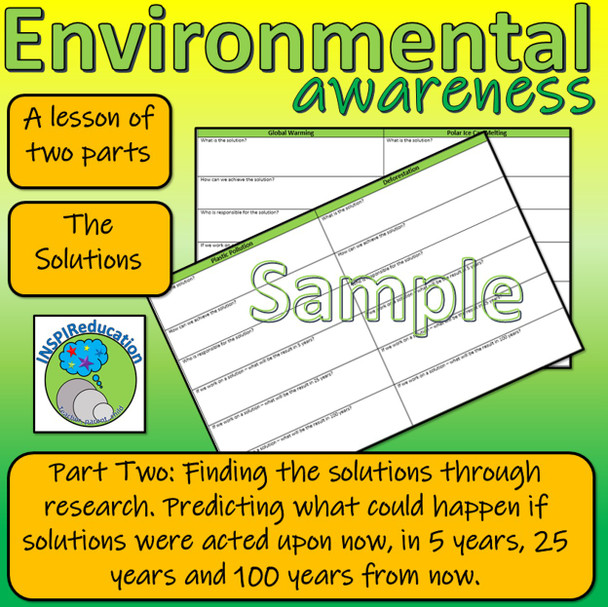Environmental Issues: Deforestation, Plastic Pollution, Ice Cap Melting, Global Warming (Problems and Solutions Research)
- Bulk Pricing:
- Buy in bulk and save
- Contributor:
- INSPIReducation
- Grade Level:
- 4, 5, 6, 7, 8
- Product Type:
- Research, Environmental Studies, Cooperative Learning
- File Type:
- ZIP, PDF
- Pages:
- 4
- Answer Key:
- N/A
Description
Recently, we have been asked lots of questions by our children about the environment, particularly linked with the plastic pollution which they have been seeing on various news outlets and television programmes.
In response to these questions, we planned a four hour session for the children to explore these issues.
We came up with a lesson of two parts - as we did not want the children to learn about the problems, and not know of the potential solutions which are currently on offer - after all, they will be the ones trying the implement change when they come of age!
Therefore, we have produced two sets of resource sheets.
Set One
The first set identify the four key issues which children are concerned about and want to learn more about:
- Plastic Pollution
- Deforestation
- Global Warming
- Polar Ice Cap Melting
In using internet sources (and balancing viewpoints from different sites - checking for factual agreements, ignoring bias and "fake" elements) the children should work in teams to complete the range of questions to explore each issue:
- What is the issue (definition)?
- How is it caused?
- What/Who is causing the issue?
- Which areas of the world are being affected?
- Who will this issue impact on living things now/in the future?
- How can we stop this change?
- If we do not stop the change - what is likely to happen? (prediction)
Set Two
The second set is more positive for the children! It explores solutions, innovations and answers to the problems. Again, using news reports, internet sources, non-fiction sources and their own knowledge of local, national and global innovations, the children work in teams once again to complete the following research questions:
- What is the solution?
- How can we achieve the solution?
- Who is responsible for the solution?
- If we worked on a solution - what would the result be in 5 years?
- If we work on a solution - what would the result be in 25 years?
- If we work on a solution - what would the result be in 100 years?
Our children found the second part incredibly positive. It provided them with information to be able to talk to one another, their parents and others with ideas, answers and ways forward to save the environment.
Preparation
Preparation is simple. Just download, print, enlarge to A3 to provide the children with a great recording space and go! Children will need access to a range of non-fiction sources to support their research.
We hope that your children find this activity as positive and informative as ours did.
Thank you for visiting our store and viewing our resources.
Best wishes
INSPIReducation























